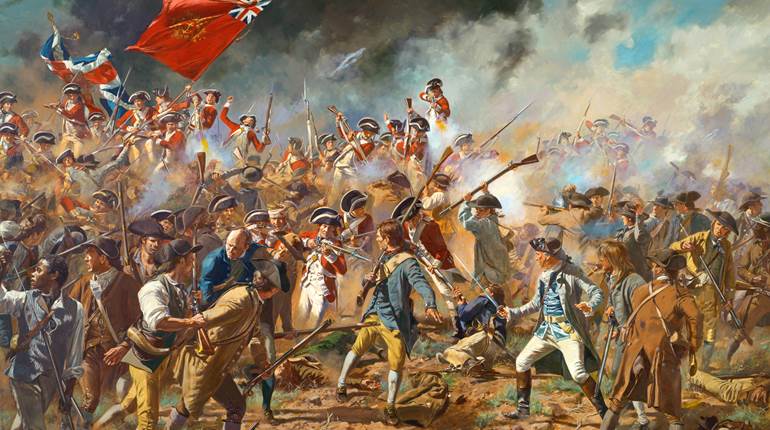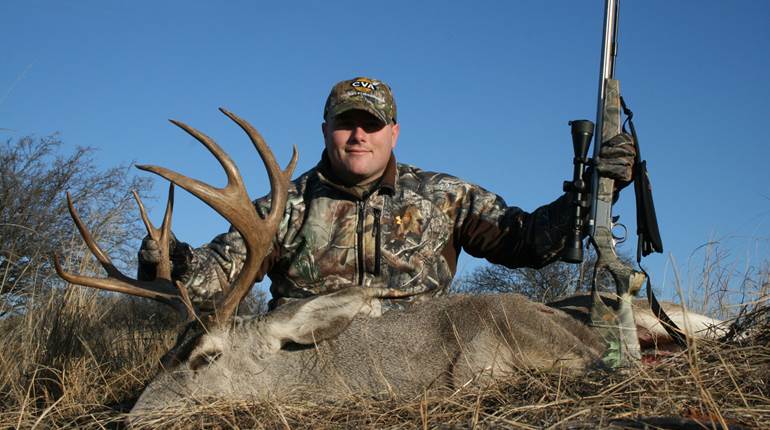
This article, “Shooting Confederate Infantry Arms Part I,” appeared originally in the April 1954 issue of The American Rifleman. To subscribe to the monthly magazine, visit NRA’s membership page.
There is a story at West Point of a guest who asked a Southern cadet about a monument to the Union graduates killed in the Civil War.
"A monument to the accurate shooting of the Confederate soldier, sir!"
Taking that statement as you will, there is an element of truth in it. The rifled shoulder arm was first used as the basic weapon of the infantry in our Civil War. More Americans were killed at Sharpsburg on September 17, 1862, in a few hours, than in the first month of the Normandy invasion. The infantry musket and rifle produced most of these casualties.
There is surprisingly little known about the accuracy and range of Civil War infantry arms. History and legend contain numerous exaggerated reports of the accuracy of the firearms used in battle by both Confederate and Union troops. It is recognized that the flintlock muskets used early in the war were incomparable to the few fine Whitworth rifles used as sniper arms by the Confederates, but there is little basis for a comparison of one arm with another of about the same quality.
Were They All Super-Accurate?
Generally, how well do Confederate infantry arms shoot? How do they compare in accuracy at close combat ranges and at longer ranges? These are questions many of us have asked.
To find answers to these questions I fired away about twenty pounds of blackpowder and eighty pounds of lead.
In all, 58 rifles and muskets were shot. Twenty-seven rifles and muskets, selected for their accuracy and 'shootability', were fired at targets at 50 and 100 yards to ascertain their performance at the ranges of close combat, and at targets at 400 and 1,000 yards to determine their usefulness at intermediate and long ranges. The longer-range shooting was done at a target on a frame positioned above water so that the misses could be spotted. Enough shooting was done with each arm to permit an evaluation of its effectiveness at these different ranges.
 (Top to bottom) - British Model 1842 Tower percussion musket, Belgian percussion musket, Austrian percussion musket, British Brunswick rifle and French Tige rifle.
(Top to bottom) - British Model 1842 Tower percussion musket, Belgian percussion musket, Austrian percussion musket, British Brunswick rifle and French Tige rifle.
In general, the weapons were fired as Johnny Reb shot them. No special sights were used. No new methods of loading were allowed. The bores were not cleaned between shots nor was any lubricant allowed on any projectile, though there is some justification for the use of beeswax.
The more than twenty different bullets used were as nearly identical to the originals as possible. The Lyman Gun Sight Corporation helped in providing a total of eleven molds, some from old, obsolete cherries. A dealer in England sent me two vitally needed molds and a supply of factory bullets 90 years old. In some instances, however, molds are unobtainable and even the original bullet shape is doubtful.
Why Confederate Arms?
The arms used by Confederate infantry, rather than those used by the Union oldiers, were fired for accuracy because of their greater variety. The South, through necessity, had to use some arms not used by the North. But Confederate arms included, through capture, all of the major Union types.
After Chancellorsville (May 1862) the most common shoulder arm in General Lee's army were the .577 caliber and .58 caliber rifle muskets, including the U.S. Model 1861, the Richmond copy of the U.S. Model 1855 musket, and the British Long Enfield (Tower) musket. Next in importance were smoothbore and a few rifled muskets of .69 caliber. Third in importance were the .54 caliber Mississippi and similar rifles. Later, a limited number of several unusual rifles were used by Confederate troops. These included the famed Whitworth rifles and several breechloading arms, among them the successful and popular Sharps. But, let's get on with the report of the performances of Confederate arms.
Round-Ball U.S. Arms
Until after the Mexican War, the basic infantry weapon of the U.S. Army was the smoothbore flintlock musket. The use of the percussion lock was confined, in general, to volunteer riflemen and cavalry. All of these Mexican War small arms—flint and percussion, rifles and smoothbore muskets—were designed to fire spherical bullets.
The first group fired for accuracy consisted of six Mexican War arms shooting round balls which were widely used by the Confederate infantry. Four were .69 caliber smoothbore muskets. One of these was a flintlock made at the Virginia Manufactory in 1818 for the State of Virginia. This arsenal produced no shoulder arms from 1822 to 1861, though many remained in storage and in the hands of Virginia militia. A second was a Model 1842 percussion musket, made at Columbia, South Carolina, by the firm William Glaze & Company in 1852 for the State of South Carolina.
 Musket ball (left) and rifle ball and patch.
Musket ball (left) and rifle ball and patch.
These two pieces represent the only military musket production in the South before the war. The South Carolina firm, which stamped its weapons PALMETTO ARMORY, furnished a single order of 24,000 muskets, rifles, and pistols in 1852 and 1853. They didn't produce any new weapons during the Civil War, although they did do reconditioning and repair.
The other two .69 caliber smoothbores were a flintlock Model 1822 (also known as the Model 1816) from Harpers Ferry Armory and a percussion Model 1842 from Springfield Armory.
A Breechloading Flintlock
Two round-ball rifles were included. There was the breechloading flintlock rifle invented and produced at the Harpers Ferry Armory by John H. Hall. The Hall arms, all breechloading, were made in several models from 1819 to about 1852. Thev embraced many novel and modern-sounding features such as complete interchangeability of parts, set trigger, and, of course, they were loaded from the breech. They were considered obsolete by the Ordnance Department in 1857. The Confederacy used some of them in their original condition and converted others to percussion muzzleloaders.
The muzzleloading U.S. Model 1841, or Mississippi, rifle completed this group. As you know, it was the first original percussion rifle used to any considerable extent in our service. Colonel Jefferson Davis’ First Mississippi Volunteers were armed with it in the Mexican War; it was commonly known thereafter as the Mississippi. Even when loaded with round balls, this piece was good—perhaps the best military round-ball rifle ever in general use.
Good Only At Close Range
Johnny Reb had to be at fairly close range to be effective with these rifles. The old smoothbore musket wasn't intended as a weapon of precision, but buckshot-and-ball loads made them a terror up to 100 yards. There are no rear sights on any of the four muskets. Even loaded carefully with round balls properly patched to fit the bore tightly, five-shot groups of about 12 inches center-to-center are about the best possible results that can be obtained with these arms at 50 yards. The groups opened up to at least three times that size at 100 yards. With paper patching, or with no patching at all, they are even less accurate.
These pieces become completely ineffective at about 200 yards. I couldn't even reach the target at 400 yards by aiming over the front sight until I took the weapon from my shoulder and aimed it in the manner of a Japanese match lock. I never came within five yards of a six-foot square target. One shot might be 50 yards to the right and short. The next, with about the same hold, would be 50 yards to the left and over.

In contrast to the smoothbores, the round-ball rifles shot very well indeed at close range. These were both made at the Harpers Ferry Armory and were fired with the same spherical bullets. In the breechloading Hall flintlock rifle, the bare bullet is forced from the chamber into a 16-groove, .52 caliber bore by the explosion of the propelling charge. The famous Mississippi, the Model 1841, .54 caliber percussion muzzle-loader, takes the same bullet patched with poplin. Groups at 100 yards of ten inches or less were common with the Mississippi rifle.
Results at 400 yards were very poor with both rifles. I hit a six-foot square target only once out of several strings of shots. The spherical ball will not carry accurately beyond about 200 yards. It loses velocity and starts to drop rapidly. In spite of the higher muzzle velocity of the rifles, the smaller and lighter round rifle balls slow down sooner than the heavier musket balls.
Fouling Bad In Rifles
These rifles gave considerable trouble as they became fouled with firing. Even with the careful loading possible in leisurely target shooting, neither would have fired more than half the rounds that were possible with the smoothbores before cleaning became necessary. The Hall leaked gases at the breech most unpleasantly. Opening and closing the action became difficult before the tenth shot. The Mississippi needed more force and more spit on the patches at about the same time. A comparison of the behavior of these two rifles with standard infantry muskets showed clearly why regular line troops retained the less accurate but more reliable smoothbore.
Obsolete Foreign Arms
Along with the really first-class, Minie-type Enfield rifles imported from England, and weapons of the same general class from Belgium and Austria, inferior arms were imported. There were smoothbore muskets converted from flintlock to percussion from Belgium and Austria. England provided both smoothbore Model 1842, Tower percussion muskets and the belted-ball, Brunswick rifles. Smaller numbers of weapons of about the same type came from France and South Germany.
The second group consisted of three obsolete foreign percussion smoothbores, an English Brunswick rifle, and a French carabine a tige—a rifle with a stem projecting forward from the breech-plug for expanding the bullet into the rifling when struck by blows from the steel ramrod to give a tight bore fit. The carabine a tige may or may not have been used in the Confederacy in quantity, although this particular specimen was in the South during the War. Percussion smoothbores from England, Belgium, and Austria were used.
Useful Only At Close Range
These weapons shot, in general, about the same as the obsolete American arms. The .75 caliber English Tower musket was the best smoothbore tested. It gave an average group size of 8.5 inches at 50 yards, but opened up to two and a half feet at 100 yards. The Belgian and Austrian smoothbores were poorer than ours. I, literally, could not have hit the broad side of a big barn with any of these muskets at 400 yards. Neither the Brunswick nor the stem rifle did as well at 100 yards as the Mississippi rifle, although both seemed to do slightly better than the American rifle at 400 yards. This slight improvement was due to the heavier weight of the bullets of the foreign rifles (500 and 710 grains compared to 215 for the Mississippi). The Brunswick fouled very badly—worse than any other weapon fired. The use of these obsolete foreign arms was short lived, at least by active Confederate troops.
—Jac Weller






































